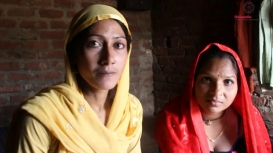The module attempts a contemporary history of the ‘Saperas,’ a denotified tribal community in India, spread across the states of Rajasthan, Haryana, Delhi, Uttar Pradesh and West Bengal. The author elaborates the perceptions surrounding the ‘Saperas’ as a people, and the notions that govern understandings of the tradition of snake charming. The ‘Saperas’ represent a particular manifestation of colonial gaze over India, but they also elicit confusion in a changing India, as a reminder of a people whose narrative of marginalization sits uncomfortably with the image of a rising, global power. The criminalization of a livelihood based on the body of the snake not only marginalised the Sapera economically but also negatively exposed the community as ‘potential criminals’ in the eyes of the state. The project seeks to document the shift in livelihood amongst the saperas of Delhi post the countrywide ban on snake charming in 1960. The module contains articles and interviews that elaborate these ideas further.
Anusha Sundar
Anusha is currently pursuing an MPhil in History at Jawaharlal Nehru University, Delhi. She is interested in histories of labour, environment, and gender and is currently studying the mica mining industry of early 20th century Bihar. She can be reached at anusha.90.96@gmail.com

